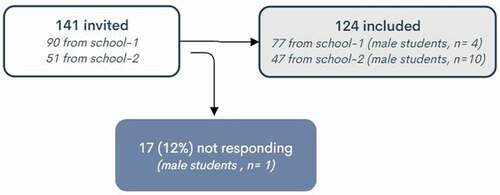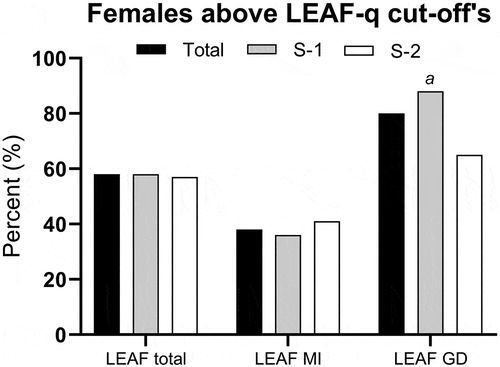Figures & data
Figure 1. An overview of invited participants, the numbers not responding to recruitment, and the total number included; also separated by schools.

Table 1. Demographic information on participants. Presentation is according to the total sample, and sorted by schools, and academic year. Results are mean (95% CI), and effect size is by Hedges g
Table 2. Symptoms of depression or anxiety, perfectionism, self-esteem, body appreciation, and resilience. Presentation is according to the total sample,and sorted by schools, and by academic year. Results are mean (99% CI) if not otherwise stated
Figure 2. The percent of the total female sample and of females from the two schools separately, who scores above cut-off for LEAF-total, LEAF-MI and LEAF-GD. NOTE: LEAF, low energy availability for females; MI, menstrual irregularities; GD, gastrointestinal dysfunction; S-1, school-1; S-2, school-2, a, significant difference between schools, p = 0.005.

Table 3. Symptoms of eating disorder (EDE-q). EDE-q scores are presented for the total sample, and samples distributed by schools and academic year. Results are median (range)
Figure 3. The percentage of total student sample, of students sorted by schools, and students sorted by academic year, who scores above clinical cut-off in EDE-q global score, binge eating behaviour, and purging behaviour. NOTE: S-1, school-1; S-2, school-2, 1st, 1st year students; 2nd, 2nd year students; 3rd, 3rd year students; Bingeing, ≥4 binge eating episodes with loss of control last 28 days (EDE-q-14); Purging, ≥4 purging episodes last 28 days (EDE-q-16-18).

